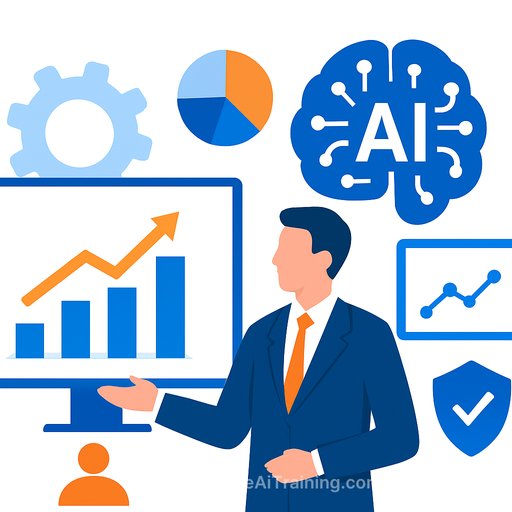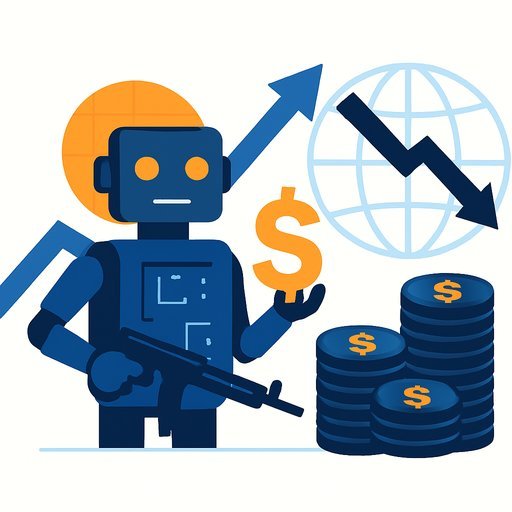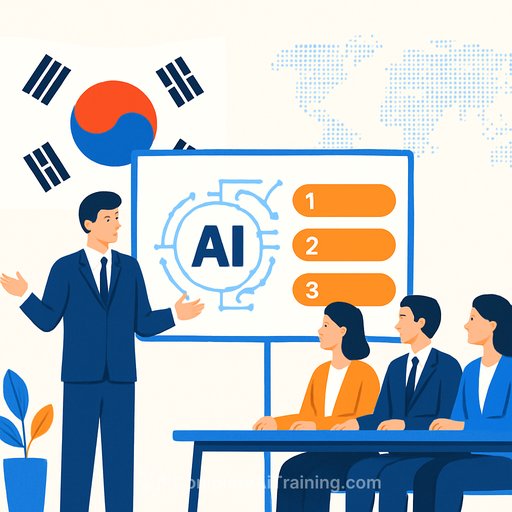Agentic AI Creates Space for HR Strategy - Now Comes the Hard Part
Agentic AI moves beyond prompts. These systems plan, act, and coordinate across tools to finish multi-step work with minimal hand-holding. That frees HR from ticket work and puts strategy back on the table. The catch: autonomy introduces risk, process debt, and new accountability.
What "agentic AI" means for HR
Agents can read requests, fetch data from multiple systems, draft outputs, trigger workflows, and check results. Think of a dependable junior ops analyst who never gets tired and follows instructions. Useful, but only if your policies, data, and workflow boundaries are clear. Without that, agents move fast and break context.
Why this shifts HR from operations to strategy
Offloading repetitive steps (FAQs, case triage, onboarding tasks, policy lookups) creates time for capability building, workforce planning, and leadership enablement. That time only matters if you redirect it with intent. Set a target: "Reallocate 20% of HR operations hours to strategic programs within 2 quarters."
The executive mandate
- Outcome targets: Cycle time, cost per case, quality, manager satisfaction, and workforce skill lift.
- Guardrails: Human-in-the-loop on sensitive actions, policy boundaries, data access rules, and audit logging.
- Cadence: Weekly pilot review, monthly risk review, and a quarterly board update on ROI and incidents.
A 90-day plan to move from talk to traction
Days 0-30: Discover and prioritize
- Map top 10 HR processes by volume and pain. Flag high-volume, low-risk steps for agents (Tier-1 queries, data entry, status updates).
- Define success metrics and ceiling constraints (what agents cannot do).
- Stand up a small "AI in HR" squad: HR Ops lead, HRIT engineer, data steward, risk partner, and a change lead.
Days 31-60: Pilot and govern
- Launch 2-3 narrow pilots (HR helpdesk triage, onboarding checklist automation, policy Q&A with citations).
- Implement access controls, prompt templates, human approvals, and immutable logs.
- Test failure modes: wrong data, ambiguous requests, policy conflicts, and escalation paths.
Days 61-90: Scale and measure
- Expand to adjacent steps (document drafting, scheduling, provisioning tickets) and integrate with HRIS/ITSM.
- Publish a playbook: use cases, guardrails, prompts, review criteria, and rollback plan.
- Report ROI, redeployed hours, error rates, and employee sentiment. Lock in wins; cut what underperforms.
Governance that prevents bad surprises
- Adopt a recognized risk framework and adapt to HR use (see the NIST AI Risk Management Framework and OECD AI Principles).
- Define RACI for each agent: requesters, approvers, owners, and auditors.
- Set clear red lines: no direct access to medical, union, or investigation data without explicit approval.
- Control environments: dev/test/prod separation, versioned prompts, and change tickets.
- Create a kill switch: instant disable for misbehavior, with documented rollback.
High-value HR use cases (by risk and payoff)
- Service desk triage: Classify, answer Tier-1, escalate with summaries. Big volume, manageable risk.
- Onboarding orchestration: Trigger accounts, devices, training, and welcome notes. Human approval on access.
- Policy assistant with citations: Answers grounded in your handbook and contracts. No free-form improvisation.
- Recruiting support: Candidate sourcing, outreach drafts, schedule coordination. Final decisions stay human.
- Learning paths: Recommend courses by role, gaps, and goals; log completions.
- Manager copilot: Draft feedback, 1:1 agendas, and performance summaries with controls on tone and bias checks.
- Compliance checks: Flag expiring certifications, missing training, and policy conflicts.
Org and skills to make it stick
- AI Product Owner (HR): Prioritizes use cases, owns backlog, and aligns with policy.
- HRIT + Data: Integrations, access controls, identity, and logging.
- Risk + Legal: Reviews sensitive prompts, data flows, and third-party terms.
- Skills: Process mapping, prompt patterns, evaluation methods, basic scripting, and business case modeling.
If your team needs structured upskilling, review role-based options at Complete AI Training or explore recognized paths in AI certifications.
Metrics that matter to the board
- Throughput: Cases per FTE and cycle time reduction per process.
- Quality: Error rate, rework, compliance exceptions, and audit findings.
- Adoption: Active users, repeat usage, and task coverage by agents.
- Experience: Employee and manager satisfaction; time-to-productivity for new hires.
- Economics: Hours redeployed to strategic work, cost per case, and net ROI.
Change management that people accept
- Be clear on "what's in it for me" for HR staff and managers.
- Create a champion network; run office hours; show before/after metrics.
- Update job descriptions and goals to reflect new workflows and tools.
- Reward risk-aware experimentation and clean handoffs to production.
Common pitfalls and how to handle them
- Shadow tools: Centralize approved agents; block data exfiltration; offer a fast intake path.
- Data leaks: Mask PII, enforce least-privilege access, and restrict external endpoints.
- Hallucinations: Ground outputs in your documents, require citations, and gate high-impact actions.
- Bias: Run pre-deployment tests, monitor for drift, and document mitigations.
- Tool sprawl: Standardize on a small stack; publish reference patterns and SLAs.
- Vendor lock-in: Favor API-first tools, exportable logs, and clear exit clauses.
Your next board slide: quick checklist
- Top 3 outcomes with target metrics and timelines.
- Five use cases in pilot/scale with risk tiering and guardrails.
- Org model: owners, approvers, and audit cadence.
- Budget and savings plan with redeployed hours.
- Risk posture: data, legal, and incident response.
Bottom line
Agentic AI can take a large chunk of HR busywork off the table. Your edge comes from clear outcomes, careful scoping, and uncompromising governance. Start small, measure hard, and reallocate the freed time to the work only your leaders can do.
Your membership also unlocks:






